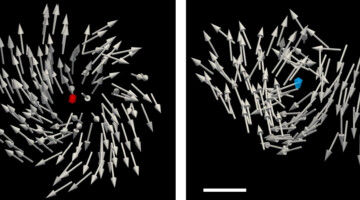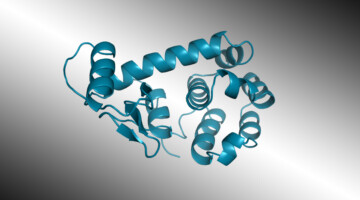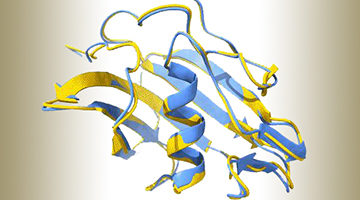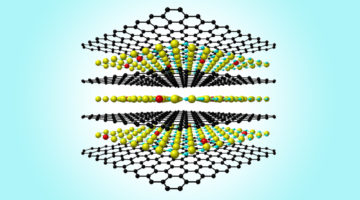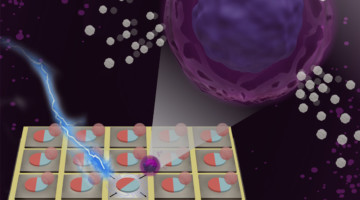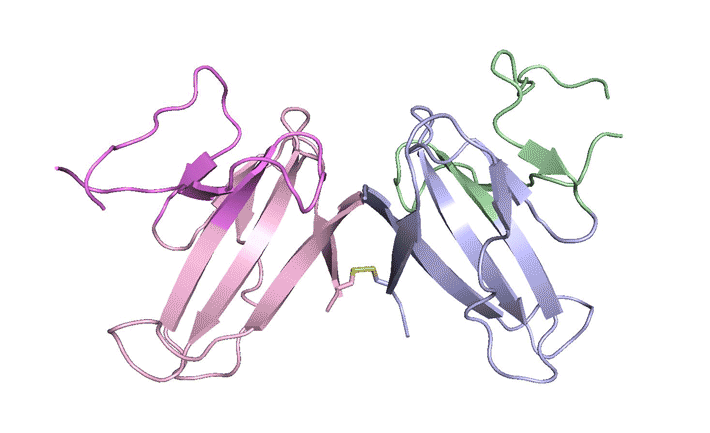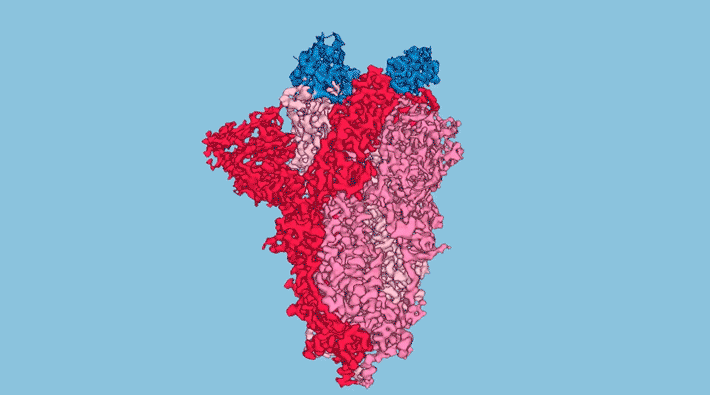Researchers created topologically stable magnetic monopoles and imaged them in 3D with unprecedented spatial resolution using a technique developed at the ALS. The work enables the study of magnetic monopole behavior for both fundamental interest and potential use in information storage and transport applications. Read more »![]()
![]()
Chatbot-Style AI Designs Novel Functional Protein
Researchers used an artificial intelligence (AI) algorithm, similar to those used in natural-language (“chatbot”) models, to design a functional protein that was then structurally validated at the ALS. The work could speed the development of novel proteins for almost anything from therapeutics to degrading plastic. Read more »![]()
![]()
Deep-Learning AI Program Accurately Predicts Key Rotavirus Protein Fold
Rotaviruses are the major causative agents of gastroenteritis worldwide. Attempts to design vaccines are complicated by the rotaviruses’ enormous genetic and immunological diversity. At the ALS, researchers validated the novel structure of a key rotavirus protein, predicted using AlphaFold2, a deep-learning artificial-intelligence program. Read more »
Nanoscale Infrared Study of Meteorite Mineralogy
Using a nanoscale infrared probe, researchers found that the minerals in a meteorite—an artifact representing the solar system’s past—were altered by water on very fine spatial scales. The work sheds light on conditions in the early solar system and lays groundwork for analyzing asteroid samples to be returned to Earth by NASA in 2023. Read more »![]()
![]()
Pushing the Boundaries of Moore’s Law: How Can Extreme UV Light Produce Tiny Microchips?
For the past 25 years, scientists and engineers from the Center for X-Ray Optics (CXRO) have worked to develop EUV lithography, a technique that enables microchip circuits and transistors that are tens of thousands of times thinner than a strand of human hair. Patrick Naulleau, a CXRO scientist who helped develop EUV lithography, shares his perspective in this Q&A. Read more »
Improving the Efficiency of Atmospheric Water Harvesting
Researchers traced the step-by-step path of water-molecule uptake in a porous compound, then made pinpoint modifications to shape the material’s water-sorption behavior. The results led to improvements in the compound’s efficiency at harvesting water from the air, an important step toward alleviating water shortages in the future. Read more »![]()
![]()
A Two-Dimensional Room-Temperature Magnet
Researchers have made the world’s thinnest (one atom thick) magnet that’s chemically stable under ambient conditions. The two-dimensional material, magnetically characterized at the ALS, could enable big advances in next-generation memory devices, computing, spintronics, and quantum physics. Read more »![]()
![]()
Programmable Micromagnets for Single-Cell Sorting
Researchers demonstrated that electrically induced mechanical strain can control the magnetic state of tiny magnets used to sort biological cells. The work lays the foundation for a programmable, single-cell sorting platform to support a wide variety of biotechnology applications, including personalized cancer treatments. Read more »![]()
![]()
Mystery Protein Helps COVID–19 Avoid Immunity
Using the Advanced Light Source (ALS), researchers solved the structure of ORF8, a protein specific to SARS-CoV-2. Understanding the structure of ORF8 opens the door to therapy studies targeting SARS-CoV-2, the virus responsible for causing COVID-19. Read more »![]()
![]()
Inhalable COVID-19 Protection via Synthetic Nanobodies
Protein structures obtained in part at the ALS helped researchers to increase the potency of simplified antibodies (nanobodies) designed to neutralize SARS-CoV-2. Stable enough to be used in inhalers or nasal sprays, the nanobodies offer a new option, aside from injected vaccines, for COVID-19 prevention and treatment. Read more »![]()
![]()
